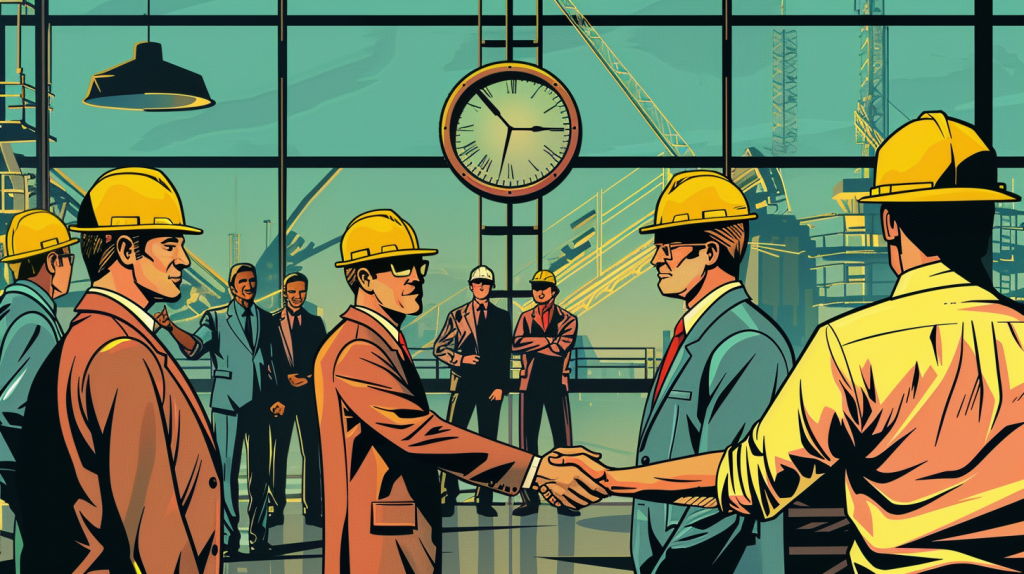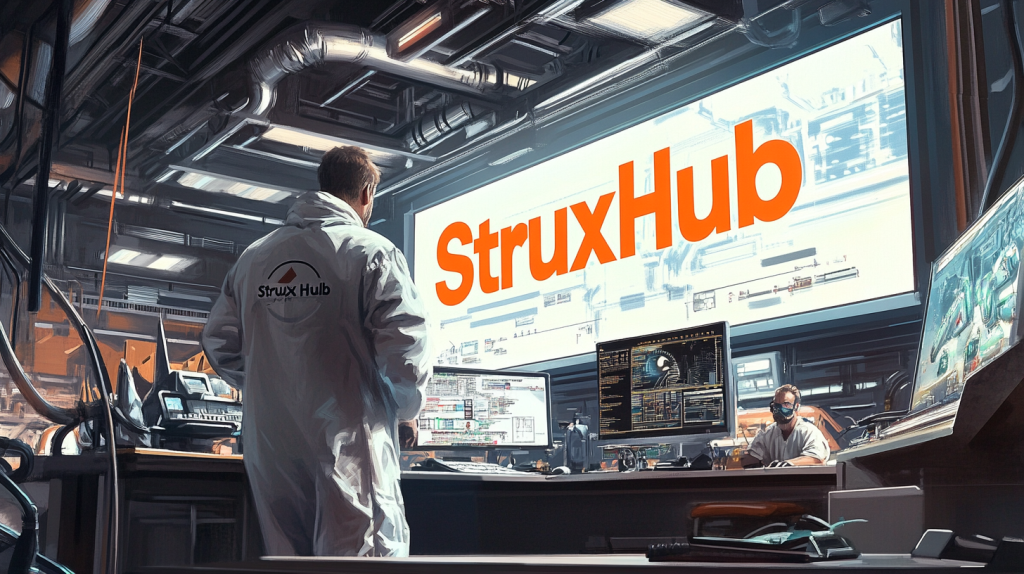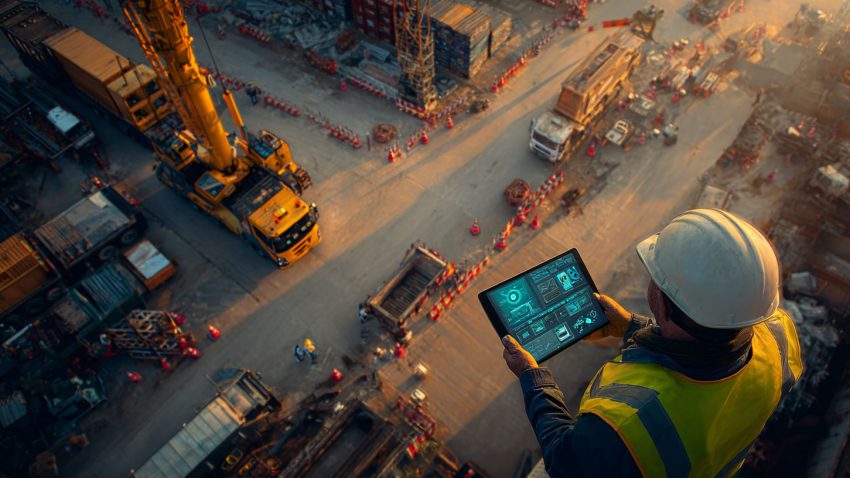Best Guide to Smart Helmets in Construction: Enhancing Safety, Communication, and Site Efficiency
Table of Contents:
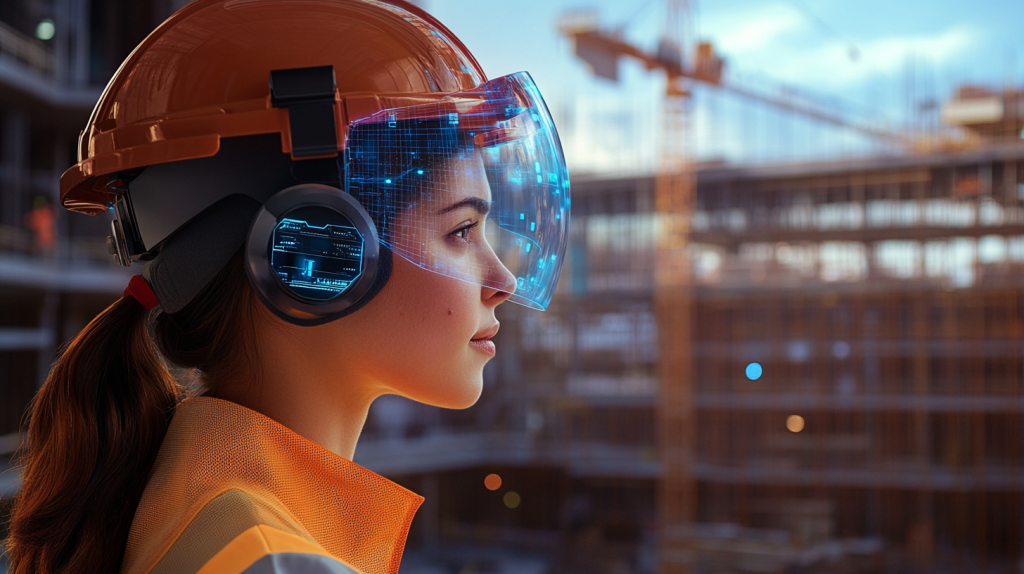
The construction industry is no stranger to innovation — from drones to BIM to modular construction, technology is rewriting how we build. But one of the most overlooked (yet game-changing) upgrades is happening right on top of our heads: the rise of smart helmets. These aren’t your standard hard hats — they’re integrated safety systems packed with cameras, sensors, augmented reality (AR), real-time communication, and data logging capabilities that can completely transform how teams work on site.
Smart helmets are designed to improve safety and communication while enhancing productivity. For superintendents, foremen, safety officers, and even inspectors, these wearable tools offer real-time access to project data, hazard alerts, or team updates — right through a heads-up display (HUD) or voice control. It’s the kind of visibility and coordination the industry has been chasing for decades.
But smart helmets aren’t just flashy gadgets. They’re becoming an important layer of protection and efficiency, especially on complex sites where time is tight, risks are high, and labor shortages make every person count. In this guide, we’ll dive into how smart helmets are used in commercial construction, what challenges they solve, and how companies can adopt them effectively without disrupting field operations.
What Are Smart Helmets and How Do They Work in Construction?
Smart helmets are next-gen safety gear that combine traditional head protection with built-in technology for enhanced jobsite awareness. They often include features like AR displays, 360° cameras, temperature and gas sensors, voice-activated commands, noise cancellation, GPS tracking, and Bluetooth communication.
These helmets are built for field conditions — durable, OSHA-compliant, and designed to integrate with your current PPE standards. Some models, like the DAQRI Smart Helmet, allow wearers to overlay blueprints in real space using AR. Others, like Trimble XR10, offer real-time project visualization synced to BIM 360 environments. This means field crews and supervisors can literally “see” what’s behind the drywall before cutting or drilling.
Problems
- Limited visibility into structural layouts or system conflicts without cutting or scanning
- Communication breakdowns between field crews, subcontractors, and office
- Paper-based inspection or documentation workflows slow down progress
Solutions
- AR features help workers visualize mechanical or electrical pathways before starting work
- Built-in comms allow instant updates between teams without needing radios or phones
- Smart helmets can log photos or data, syncing directly to field reports or punchlists
Best Practices
- Pair smart helmet use with BIM models or 3D scans to maximize utility
- Train crews on voice commands and helmet interfaces during toolbox talks
- Use helmet footage as part of safety audits or training libraries for new workers
Smart helmets aren’t replacing safety managers or supervisors — they’re augmenting them. By turning every worker into a connected node on the jobsite, companies gain visibility, accountability, and a safer, more informed team.
How Smart Helmets Are Redefining Safety Standards on Jobsites
While hard hats have been standard PPE for decades, they’ve always been passive — designed to protect but not prevent. Smart helmets shift that dynamic. With sensors, cameras, and real-time alerts, they help field workers detect hazards before incidents happen. Think of it like turning your safety gear into an early warning system.
Some helmets now include fall detection sensors or heart rate monitors to flag fatigue or injury risk. Others are equipped with environmental sensors that detect high heat, poor air quality, or harmful gases — alerting the wearer or safety manager immediately. This is especially critical on vertical builds, enclosed environments, or sites with variable conditions like tunnels, mechanical rooms, or crawl spaces.
Problems
- Reactive safety culture dependent on post-incident reports
- Difficulty monitoring lone workers or large-scale crews in real time
- Gaps in environmental hazard awareness (heat, gas, noise)
Solutions
- Sensor-driven alerts provide immediate feedback when conditions become unsafe
- GPS and biometric tracking help locate and monitor lone workers
- Cloud-syncing capabilities allow safety managers to monitor risk trends across sites
Best Practices
- Set automated alerts to flag unsafe zones or overheating equipment areas
- Use smart helmets in coordination with safety dashboards or analytics tools
- Record helmet data as part of compliance documentation or incident reviews
By shifting from reactive to proactive safety, smart helmets give field leaders the data they need to make faster, smarter decisions — not just for one site, but across entire portfolios.
Improving Field Communication Through Smart Wearable Tech
On a busy jobsite, communication breakdowns aren’t just frustrating — they’re dangerous. Whether it’s a missed radio call, a misunderstood instruction, or a delay in relaying critical updates, even small miscommunications can lead to errors, rework, or injuries. Smart helmets are helping solve that by enabling hands-free, voice-activated communication and real-time connectivity.
With built-in Bluetooth, bone-conduction speakers, or push-to-talk functionality, teams can stay in touch without reaching for radios or phones. Some systems even allow streaming video to offsite managers or engineers, making remote walkthroughs or problem-solving faster and more effective. No more “Can you text me a photo?” or “Let me call you back” delays.
Problems
- Traditional radios are noisy, limited in range, and easily dropped or forgotten
- Foremen and supers waste time relaying updates from crew to office
- On-site and off-site teams often operate with different information
Solutions
- Voice-activated communication systems allow safer, hands-free updates
- Live-streaming capabilities create real-time collaboration with offsite teams
- Cloud-connected helmets sync documentation, updates, and footage automatically
Best Practices
- Integrate smart helmet comms into daily planning meetings or huddles
- Assign field leads with helmet camera access to support quality control remotely
- Use voice logs and synced transcripts to verify instructions and protect against liability
The better your communication, the faster your site moves — and the safer your team becomes. Smart helmets don’t just connect people — they connect decisions, documentation, and accountability across the board.
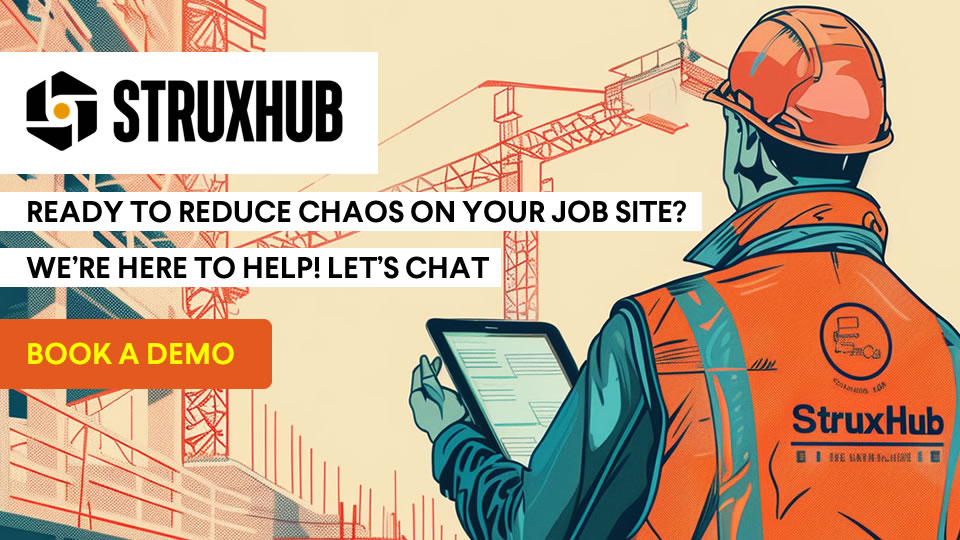
Boosting Efficiency with Real-Time Data and Documentation
Construction sites move fast — and so does the flow of information. But without a streamlined way to capture, share, and access that information in the field, teams fall behind. Smart helmets are helping bridge this gap by capturing real-time data at the point of work: photos, videos, voice memos, and even equipment readings. No clipboards. No back-and-forth texts. Just instant documentation, synced to the cloud.
This kind of frictionless data capture has huge implications. Field workers can now document installation quality, safety conditions, or progress updates without stopping work or waiting on inspections. Supervisors can access this information instantly from the trailer or remote offices — and make faster, better-informed decisions.
It’s not just about speed. Real-time documentation helps eliminate miscommunication, reduce rework, and protect teams from liability by creating a digital trail of what happened, when, and why.
Problems
- Field documentation is often inconsistent or delayed
- Photo and video files get lost between devices or team members
- Office staff lack timely insight into what’s happening on site
Solutions
- Smart helmets with built-in cameras and cloud sync capture and share data immediately
- Time-stamped visual records improve QA/QC tracking and project transparency
- Real-time access to site conditions allows faster issue resolution
Best Practices
- Create a tagging system for footage (e.g., inspection, delay, safety)
- Link helmet footage to daily logs or punchlist items
- Train teams to use voice notes instead of written reports when possible
Efficiency isn’t just about moving faster — it’s about removing friction. With smart helmets, field data flows seamlessly to decision-makers, improving everything from scheduling to closeout.
Related Articles:
How Smart Helmets Are Transforming Construction Site Safety
The History and Evolution of Hard Hats to Smart Helmets in Construction
The Best Guide to Delivery Management Systems (DMS) for Commercial Construction
Best Guide to Construction Management Software
Challenges and Limitations of Smart Helmet Adoption
As exciting as smart helmets are, they aren’t without challenges. From cost concerns to crew resistance, many companies are still on the fence about adoption. And while early adopters are seeing real ROI, others are struggling with device reliability, integration issues, or unclear protocols.
One of the biggest barriers is cost — high-end smart helmets can range from $1,500 to $5,000 per unit. That’s a big leap compared to a standard $50 hard hat. There’s also the question of fit and comfort — if the helmet is too bulky or heavy, workers may resist wearing it.
Other hurdles include data security, battery life, training needs, and compatibility with existing software platforms. For companies with older tech stacks or decentralized workflows, smart helmets may feel like a step too far — or worse, another disconnected tool.
Problems
- High up-front costs can deter wide-scale rollout
- Workers may be skeptical or uncomfortable with new gear
- Integration with existing workflows and software can be clunky
Solutions
- Start with pilot programs on high-risk or high-value jobs
- Provide hands-on training and early adopter incentives
- Choose helmets that integrate easily with your construction management system
Best Practices
- Survey crews and safety leads to select the most user-friendly models
- Build smart helmet use into project planning, not just safety orientation
- Track adoption metrics and feedback to continuously refine usage
Like any innovation, the success of smart helmets depends on how well they’re rolled out. With the right strategy, even a small deployment can drive major performance gains.
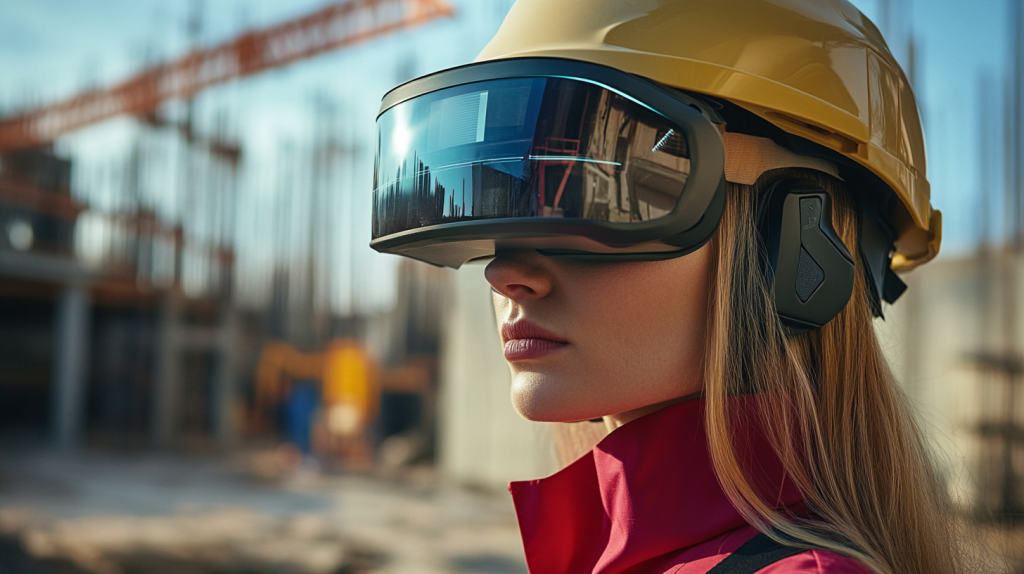
Why Smart Helmets Will Be Standard Gear on Future Job Sites
Smart helmets are still emerging tech — but they won’t be for long. As wearables evolve, prices drop, and construction workflows become more digital, smart helmets are poised to become as common as safety vests or boots. In fact, many GCs and developers are already writing them into future specs for large-scale projects.
Why? Because the value is too big to ignore. With one piece of equipment, you can improve safety, streamline documentation, enhance communication, and reduce costly errors. And when paired with platforms like BIM or cloud-based construction management systems, smart helmets unlock even more powerful integrations.
Beyond the site, smart helmets will also play a role in compliance, insurance claims, training, and even labor optimization. Imagine onboarding a new crew with helmet-guided walkthroughs — or auto-logging every inspection with date, time, and photo backup. That’s not the future — it’s already happening on pilot projects across the U.S., Canada, and Europe.
Problems
- Standard PPE hasn’t evolved in decades, leaving opportunity on the table
- Many construction teams still rely on outdated, manual processes
- Future-ready tech is underutilized because it feels out of reach
Solutions
- Treat smart helmets as an investment in performance and protection
- Align safety upgrades with digital transformation goals
- Choose vendors offering scalable solutions and responsive support
Best Practices
- Include smart wearables in future RFPs or bid packages
- Partner with tech-forward subs and vendors
- Use smart helmet data to support continuous improvement across job sites
Smart helmets won’t replace skilled workers — but they will help them build faster, safer, and smarter. The companies that embrace this shift early will gain a clear edge as the industry modernizes.
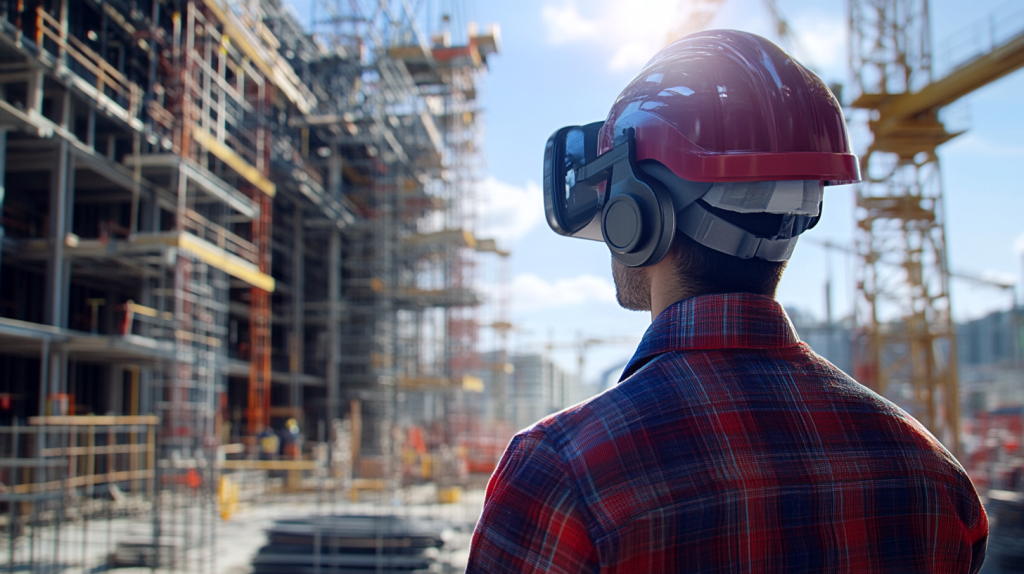
How StruxHub Supports Smart Helmet Workflows with Better Project Oversight
While smart helmets provide frontline visibility and real-time documentation in the field, the real challenge is making sure that what happens on-site is captured, organized, and acted on across the broader project team. That’s where StruxHub comes in — as the digital backbone that helps superintendents, project managers, and field supervisors manage smarter and communicate faster.
StruxHub doesn’t connect directly to smart helmet hardware — and it doesn’t need to. Instead, it supports the workflows that smart helmets enable by giving teams a central platform to track field activity, document updates, and align office and site operations.
For example, footage or photos captured via smart helmet can be easily uploaded into StruxHub’s daily reports, punchlists, or issue logs. Voice notes or field observations recorded through wearables can be transcribed or summarized into tasks, RFIs, or safety logs. And most importantly, project leaders can organize this information in a way that keeps everyone accountable and informed — no more scattered field data or disconnected updates.
What StruxHub Helps You Do
- Centralize field updates, safety reports, and visual documentation
- Assign tasks, track resolutions, and keep teams aligned with what’s happening in the field
- Use smart helmet content more effectively by embedding it into your daily workflows
How It Supports Superintendents and Field Leaders
- Keeps smart helmet insights organized and accessible to the right people
- Creates a single source of truth between office, trailer, and jobsite
- Streamlines communication so you can act on field observations faster
StruxHub doesn’t replace the tools used in the field — it gives those tools structure. By turning field-level insights into trackable actions, it helps your team stay ahead of the curve and focused on what matters most: building safer, faster, and with fewer surprises.
Unlock the Full Potential of Your Construction Projects with StruxHub
StruxHub enhances efficiency and coordination across all project phases, providing a single source of truth that eliminates silos and fosters collaboration. Real-time updates, financial management tools, and seamless commvunication features ensure that all team members and stakeholders are aligned and informed, reducing the risk of errors and delays. With comprehensive solutions for document management, risk mitigation, and quality control, StruxHub maintains project integrity and safety, while mobile access and integration capabilities further enhance project flexibility and efficiency.
StruxHub’s Key Features and Benefits:
- Advanced Delivery Management: Automate and optimize your delivery schedules, ensuring materials arrive just in time, every time.
- Site Communication: Utilize georeferenced maps and instant messaging to keep every team member informed and aligned.
- Construction Materials Management: Track inventory levels and manage materials procurement with ease, reducing waste and avoiding project delays.
- Construction Safety & Inspection Workflows: Implement customizable mobile forms for conducting safety inspections and managing compliance documentation effortlessly.
- Short-Term Scheduling: Visualize project tasks with detailed floor plans, linking each activity to specific locations for better planning accuracy.
- Construction Resource Management: Efficiently allocate personnel and equipment, maximizing productivity and reducing idle time.
StruxHub’s Product Offering:
- StruxHub Deliveries: Simplifies the coordination of incoming deliveries, ensuring materials and equipment are precisely timed to project needs.
- StruxHub Logistics: Offers intelligent site logistics planning, from crane scheduling to space allocation, for smoother operations.
- StruxHub Safety: Elevates on-site safety standards with easy-to-use tools for inspections, permits, and incident reporting.
- StruxHub Scheduling: Enhances project timelines with intuitive scheduling tools that ensure tasks are completed efficiently and on time.
With StruxHub, construction companies can look forward to a streamlined, more efficient project execution that delivers on time and within budget. Embrace the power of innovation and take your construction projects to the next level.
Don’t miss out on the opportunity to optimize your construction management processes with StruxHub. Sign up for a free demo today. Let’s build smarter, together.
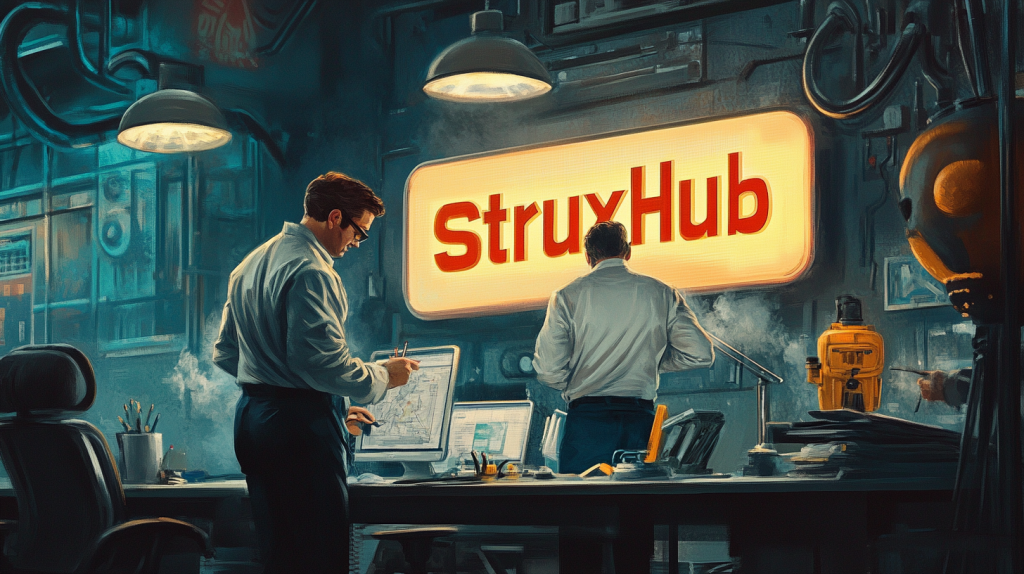
StruxHub
Experience the power of StruxHub today and witness firsthand how it can revolutionize your construction operations.
FAQ
Are smart helmets actually being used on real construction projects today?
Yes — smart helmets are already being used on commercial construction sites around the world. Companies like Mortenson, Turner, and Skanska have piloted or deployed smart helmets on large-scale builds ranging from data centers to hospitals and industrial facilities. These aren’t science-fiction gadgets — they’re rugged, OSHA-compliant wearable tools that are being tested in real field conditions.
The most common use cases today include augmented reality overlays for MEP routing, built-in communication systems for hands-free team coordination, and real-time video capture for inspections or documentation. Some firms are also using smart helmets to stream live walkthroughs for remote QA/QC teams or client updates.
As the technology matures and prices become more accessible, we’re seeing increased adoption on vertical builds, confined-space jobs, and high-risk zones where safety and speed are equally critical. Smart helmets are quickly moving from “pilot-only” to “project standard,” especially among tech-forward general contractors and developers.
What’s the difference between a smart helmet and a regular hard hat with a camera?
While it may seem similar at first glance, a smart helmet is far more than just a hard hat with a GoPro strapped to it. Smart helmets are fully integrated systems — combining safety gear with built-in sensors, AR displays, audio comms, and cloud connectivity. These systems are designed to function as a unified platform, not just record video.
For example, a smart helmet may include:
- A heads-up display (HUD) to overlay models or diagrams
- Bluetooth communication for team coordination
- Environmental sensors for gas, heat, or noise detection
- Voice commands to trigger hands-free reporting or data capture
Traditional hard hats with accessories can help in specific cases, but they don’t offer the same seamless user experience or data integration. Smart helmets are purpose-built to support advanced workflows — from real-time BIM integration to safety alerting and instant documentation.
Are smart helmets compatible with other construction software platforms?
Compatibility depends on the brand and the software ecosystem your company uses. Leading smart helmet manufacturers like Trimble, Guardhat, and RealWear are designing their devices to work with widely used construction platforms like Autodesk BIM 360, Procore, and Trimble Connect.
However, to get the most out of your investment, you’ll want to ensure the helmet integrates with your core project management system — especially if you’re using StruxHub. With StruxHub, smart helmet footage, voice notes, alerts, and inspection photos can be automatically linked to task lists, RFIs, daily reports, or punchlists, giving you full traceability and project context.
The key to successful implementation isn’t just the hardware — it’s choosing tools that fit into your existing workflows and amplify your visibility without creating more silos.
How much do smart helmets cost — and are they worth the investment?
Most smart helmets range between $1,500 and $5,000 depending on features, sensors, and connectivity. While that’s a significant jump from traditional PPE, the return on investment can be substantial — especially on high-risk or high-budget commercial jobs.
The ROI comes from:
- Faster issue detection and resolution
- Better documentation and quality control
- Fewer communication breakdowns
- Stronger safety compliance
- Enhanced owner confidence and transparency
For many firms, even a small deployment — such as one or two smart helmets per project — can deliver results. You don’t need to equip every worker to get value. Start with supers, safety managers, or QA leads. Once the benefits are proven, scaling becomes easier and more justifiable.
What are the best practices for rolling out smart helmets on a construction site?
Rolling out smart helmets successfully starts with strategy and training. Don’t just drop devices on your crews and expect instant adoption. Begin with a clear use case — like live-streaming inspections or capturing daily jobsite conditions — and build workflows around that.
Start with a small pilot group of tech-savvy workers or field leads. Provide short, hands-on training sessions that explain both the benefits and the day-to-day use. Make sure the helmets are comfortable, well-maintained, and supported by your IT team or technology partner.
It’s also smart to align helmet usage with your project management platform, so that video, audio, or data feeds are tied directly to tasks, reports, or safety logs. Platforms like StruxHub can simplify this process and help track adoption, performance, and risk reduction across jobs.
Encourage regular feedback and iterate on your approach. The better the rollout, the more likely your crews are to adopt — and embrace — this game-changing tech.
